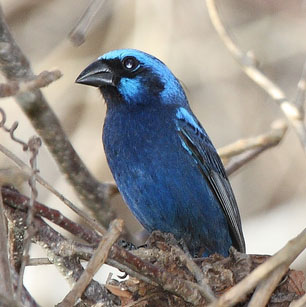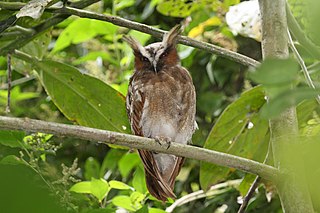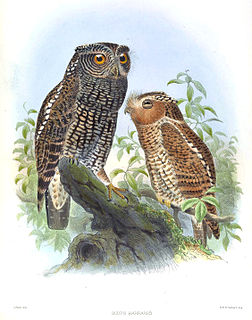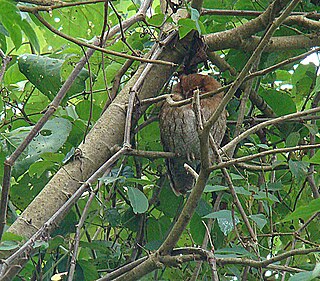
The barred owl, also known as the northern barred owl, striped owl or, more informally, hoot owl, is a North American large species of owl. A member of the true owl family, Strigidae, they belong to the genus Strix, which is also the origin of the family's name under Linnaean taxonomy. Barred owls are largely native to eastern North America, but have expanded their range to the west coast of North America where they are considered invasive. Mature forests are their preferred habitat, but they can also acclimate to various gradients of open woodlands. Their diet consists mainly of small mammals, but this species is an opportunistic predator and is known to prey upon other small vertebrates such as birds, reptiles, and amphibians, as well as a variety of invertebrates.

The brown wood owl is found in India, Bangladesh, Sri Lanka, Indonesia, Taiwan, and south China. The brown wood owl is a resident breeder in south Asia. This species is a part of the family of owls known as typical owls (Strigidae), which contains most species of owl. It belongs to the earless owl genus Strix.

The ferruginous pygmy owl is a small owl that breeds in south-central Arizona and southern Texas in the United States, south through Mexico and Central America, to South America into Brazil, Bolivia, Paraguay and Argentina.

The unspotted saw-whet owl is a small "typical owl" in subfamily Surniinae. It is found in Costa Rica, El Salvador, Guatemala, Mexico, and Panama.

The mottled owl is a medium-sized owl found in Central and South America from Mexico to Brazil and Argentina. The head and back are mottled brown and the underparts whitish, with vertical bars on the chest and throat. The eyes are dark and the head is round and they do not have ear tufts. They are territorial and found in dry forests and jungles at altitudes of up to 2,500 m (8,200 ft) above sea level.

The blue bunting is a species of passerine in the family Cardinalidae, the cardinals or cardinal grosbeaks. It is found in Belize, El Salvador, Guatemala, Honduras, Mexico, and Nicaragua.

The rusty-barred owl is a medium-sized "typical owl" in subfamily Striginae. It is found in Argentina, Brazil, and Paraguay.

The rufous-legged owl is a medium-sized owl. It is found in Argentina and Chile.

The Chaco owl is an owl found in Argentina, Bolivia, and Paraguay.

The pheasant cuckoo is a species of neotropical cuckoo in the subfamily Neomorphinae of the family Cuculidae. It is native to Central and South America where it occurs in lowland tropical forest.

The rufous-banded owl is a species of owl in the family Strigidae. It is found in Bolivia, Colombia, Ecuador, Peru, and Venezuela.

The black-and-white owl is a species of owl in the family Strigidae.

The Central American pygmy owl is a species of owl in the family Strigidae. It is found in Belize, Colombia, Costa Rica, Ecuador, Guatemala, Honduras, Mexico, Nicaragua, and Panama.

The crested owl is a species of owl in the family Strigidae. It is the only species (monotypic) in the genus Lophostrix. It is a resident bird and occurs in Central America and northern South America. It is a medium-sized owl, easily recognizable with its very long whitish ear tufts and otherwise darker appearance. It inhabits lowland rainforests and prefers old growth in proximity with water. The crested owl is a strictly nocturnal species, but very little is known about its behaviour.

The bearded screech owl is a small "typical owl" in subfamily Striginae. It is found in Guatemala and Mexico.

The Pacific screech owl is a species of owl in the family Strigidae. It is found in Costa Rica, El Salvador, Guatemala, Honduras, Mexico, and Nicaragua.

The Middle American screech owl, also known as the Guatemalan screech owl, is a species of owl in the family Strigidae. It is found from northern Mexico to northern Nicaragua.

The cloud-forest screech owl is a species of owl in the family Strigidae. It is found in Bolivia and Peru.
The cinereous owl or Mexican barred owl, is an owl that is endemic to Mexico.

The Santa Marta screech owl is a species of owl in the family Strigidae. It is found only in the Sierra Nevada de Santa Marta of Colombia.





















